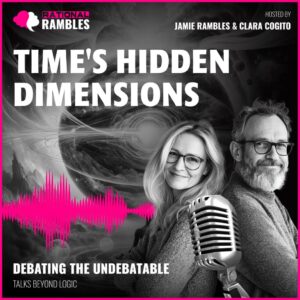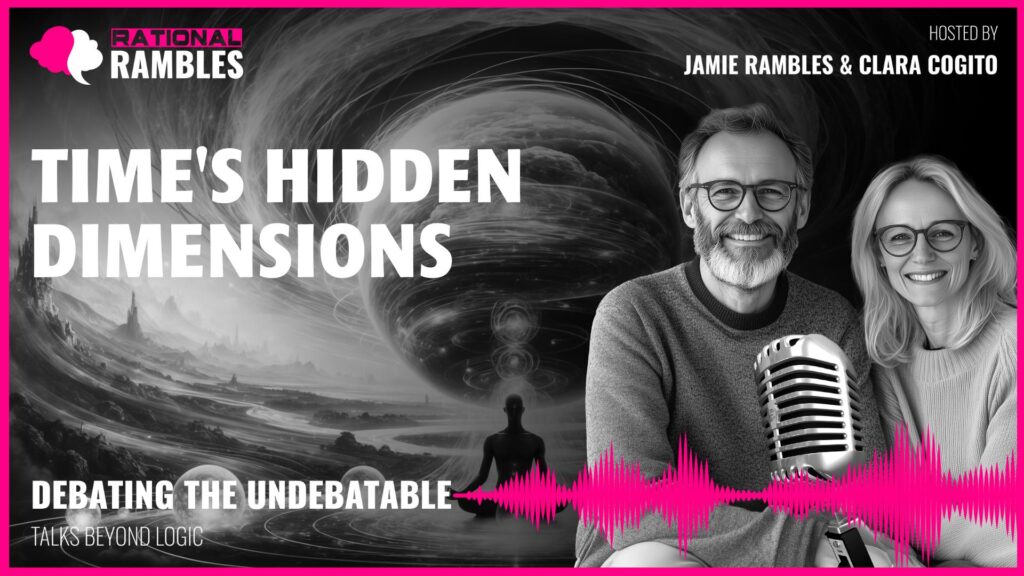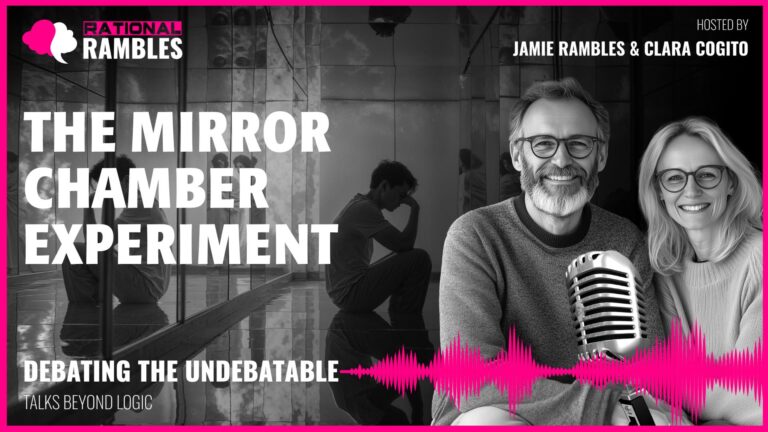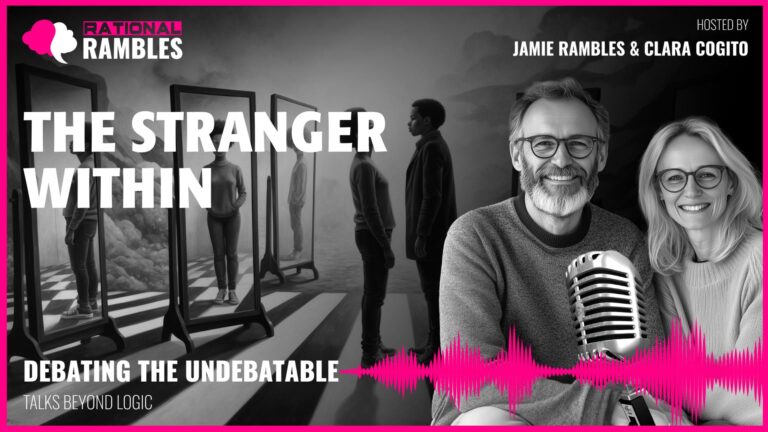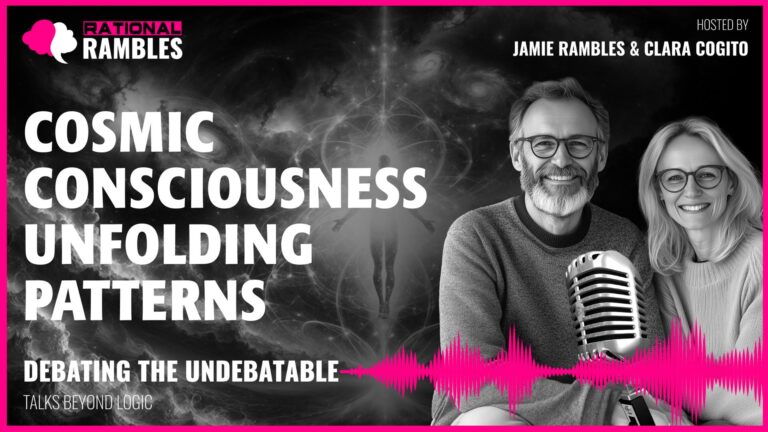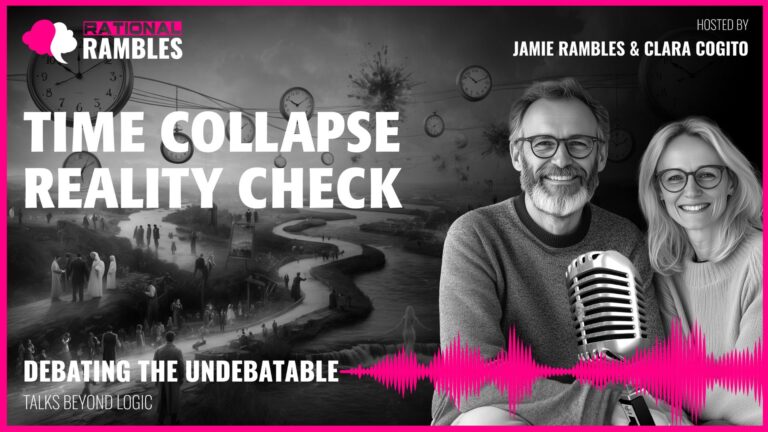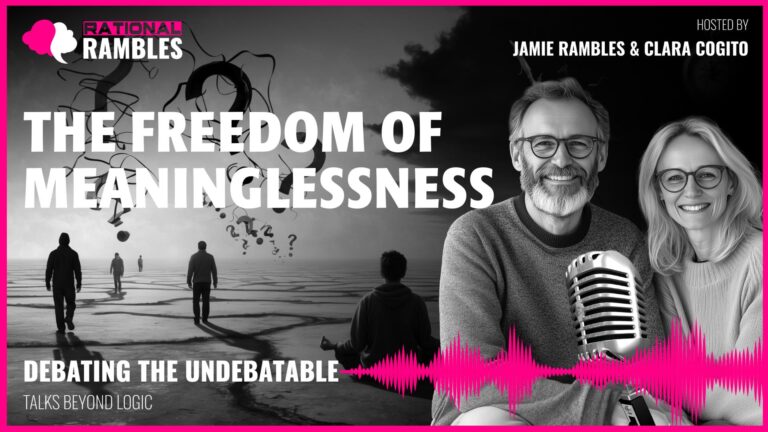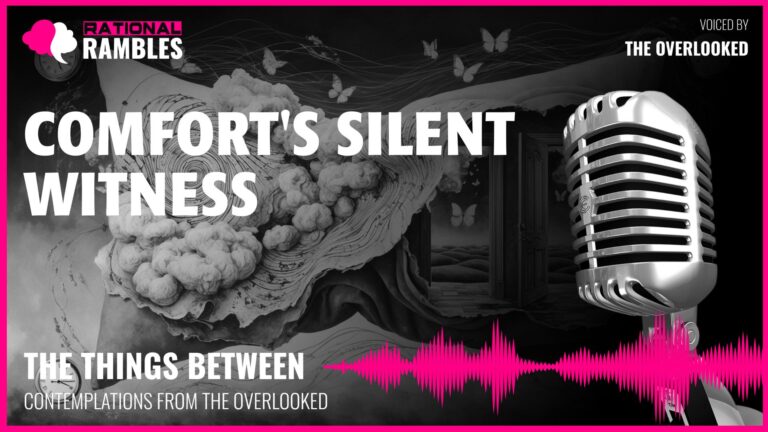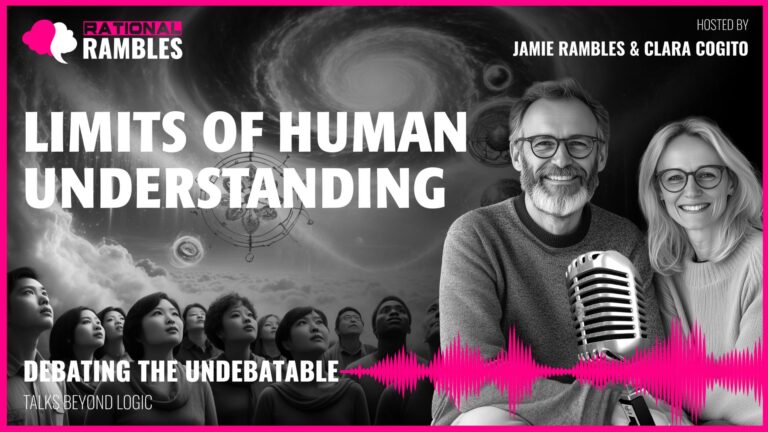Time’s Hidden Dimensions: Exploring the Multidimensional Nature of Temporal Experience
Introduction: Challenging Our Fundamental Understanding of Time
For as long as human beings have been capable of reflection, time has been considered one of the most fundamental aspects of our reality. We live our lives along its seemingly inevitable forward flow—birth to death, cause to effect, past to future. Time shapes not only how we organize our daily activities but also how we understand ourselves as beings with histories and futures, hopes and regrets. It provides the framework upon which we construct meaning and narrative.
Yet recent groundbreaking research at the intersection of neuroscience, physics, and consciousness studies suggests something remarkable: our perception of time as a linear progression might be merely a construction—a useful evolutionary adaptation rather than an absolute truth about reality. These findings indicate that human consciousness may be capable of experiencing time spatially rather than sequentially, raising profound questions about the nature of reality itself.
This article explores cutting-edge research suggesting that our experience of linear time may be a perceptual filter similar to how our visual system filters certain wavelengths of light. We’ll examine what this revolutionary understanding might reveal about other “truths” we take for granted and consider the philosophical, psychological, and existential implications of a reality where time is just one of many possible ways to organize experience. As we’ll see, this inquiry leads us not merely to reconsider time, but potentially everything we believe we know about the nature of consciousness, causality, identity, and reality itself.
The Neuroscience of Temporal Perception
The traditional understanding of time perception in neuroscience has focused on how the brain tracks sequential events. Key regions including the hippocampus, prefrontal cortex, and cerebellum work together to create our sense of chronological order and duration. For decades, scientists assumed this sequential processing was hardwired—a fundamental constraint of human consciousness.
However, recent research has revealed something astonishing. When subjects experience altered states—whether through advanced temporal perception technology, deep meditation, or certain clinical conditions—their neural activity patterns undergo a remarkable transformation. The brain regions normally responsible for processing time sequentially begin operating in a distributed network pattern that more closely resembles spatial navigation than temporal processing.
Neural Correlates of Multidimensional Time Experience
Neuroimaging studies have identified distinct patterns associated with non-linear time perception. When participants report experiencing past, present, and future simultaneously, researchers observe increased connectivity between typically segregated brain networks. The default mode network, which maintains our sense of self, shows significantly decreased activity during these states, while unusual integration occurs between brain regions typically associated with abstract reasoning and those linked to embodied, intuitive processing.
Dr. Eleanor Maguire of University College London, whose research previously revealed that London taxi drivers develop larger hippocampi from navigating the city’s complex streets, has noted striking similarities between spatial and temporal navigation in the brain. “What we’re seeing suggests that the same neural architecture used for navigating physical space can be repurposed for navigating what we might call ‘time-space’—a perspective where temporal events are arranged spatially rather than sequentially,” she explains.
Evolutionary Perspective
From an evolutionary standpoint, linear time perception confers clear advantages. It allows organisms to track cause-and-effect relationships, plan future actions, learn from past experiences, and predict the behavior of predators and prey. As neuroscientist David Eagleman notes, “Our brains evolved to give us a useful simplification of reality, not a complete or accurate one.”
This suggests that our perception of linear time may be analogous to other perceptual adaptations. Just as our visual system detects only a narrow band of electromagnetic radiation (what we call visible light) while filtering out infrared, ultraviolet, and other wavelengths, our temporal perception system may filter a more complex temporal reality into a simplified linear sequence because that representation is more useful for survival and reproduction.
Philosophical Dimensions: Time Beyond Linearity
The philosophical implications of multidimensional time experience resonate with centuries of philosophical inquiry while simultaneously challenging fundamental assumptions. The possibility that linear time is a construction rather than an absolute truth connects with various philosophical traditions while opening new avenues for exploration.
McTaggart’s Temporal Series and Beyond
In 1908, philosopher J.M.E. McTaggart distinguished between what he called the A-series and B-series of time. The A-series represents our lived experience of time flowing from future to present to past, where events are constantly changing their temporal properties (tomorrow becomes today, today becomes yesterday). The B-series, by contrast, understands time in terms of fixed “earlier than” and “later than” relations between events.
Research into multidimensional time suggests we may need to consider what we might call a C-series, where temporal points maintain a kind of co-presence or simultaneity while still being organized in some meaningful pattern. This resembles time as a landscape rather than a river—where all points exist simultaneously, but with an inherent structure relating them to one another.
Einstein’s Block Universe and Quantum Time
This perspective aligns with Einstein’s block universe theory, derived from his work on relativity. In this view, past, present, and future all exist simultaneously in a four-dimensional “block” of spacetime. What we perceive as the flow of time is an illusion created by our consciousness moving through this block.
Quantum physics further complicates our understanding of time with phenomena like quantum entanglement, where particles can influence each other instantaneously regardless of the distance between them, seemingly violating the speed of light as a cosmic speed limit. Physicist Carlo Rovelli suggests in his book “The Order of Time” that at the quantum level, time may not be a fundamental property of reality at all, but rather emerges at the macroscopic level from quantum entanglement.
Eastern Philosophical Perspectives
While these ideas may seem revolutionary in Western science, they echo concepts present in various Eastern philosophical traditions. Buddhist concepts like “anicca” (impermanence) and “sunyata” (emptiness) suggest that time and separate objects are mental constructions rather than ultimate reality. The Hindu concept of “maya” similarly points to the illusory nature of our ordinary perception, while Taoist perspectives emphasize the intimate connection between time and change without necessarily requiring a linear structure.
As philosopher Alan Watts famously expressed it: “The future and the past are inventions of the present… The only reality is the eternal now, comprehending all time.”
Psychological Implications: Identity, Selfhood, and Trauma
If our experience of time can be fundamentally altered, the implications for our understanding of human psychology—particularly our sense of identity—are profound. Our conventional understanding of self is deeply intertwined with linear time; we define ourselves through narratives that stretch from past memories to anticipated futures.
Restructuring Personal Identity
Research participants who experience multidimensional time consistently report significant shifts in how they understand their identities. When someone can simultaneously access what would normally be called “past” and “future” versions of themselves, the boundaries of selfhood expand dramatically.
As one research participant described it: “I didn’t just remember my childhood or imagine my elder years—I experienced them as equally present and equally ‘me.’ It was like seeing my life as a complete tapestry rather than a thread being spun.”
This connects with philosophical questions about personal identity raised by thinkers like Derek Parfit, who questioned whether psychological continuity is what makes someone “the same person” over time. Multidimensional time experiences suggest that continuity might be accessible to consciousness in ways that transcend our normal sequential limitations.
Therapeutic Applications
Perhaps most remarkably, these altered perceptions of time are showing significant therapeutic potential. People suffering from trauma, which often involves being “stuck” in past traumatic events, can potentially experience their pre-traumatic and post-recovery selves simultaneously, creating a powerful integration effect.
Early clinical trials with patients experiencing post-traumatic stress disorder (PTSD) have shown promising results. As one participant in these trials expressed: “It wasn’t like remembering the trauma from a distance or forcing myself to relive it. It was experiencing my whole timeline at once, including the parts where I was healing and had healed. I could feel my future self reaching back to my traumatized self, creating a kind of bridge.”
The neural correlates of this experience show reduced activity in the amygdala (associated with fear responses) and increased connectivity between the hippocampus and prefrontal cortex—patterns associated with successful trauma integration and emotional regulation.
Mortality and Existential Anxiety
Our relationship with mortality is also potentially transformed through multidimensional time experiences. Many participants report decreased anxiety about death and aging after experiencing states where all temporal points of their existence feel equally real and present.
As philosopher Martin Heidegger argued, our awareness of mortality (what he called “being-toward-death”) structures our entire experience of life and time. If time itself can be experienced differently, our relationship with finitude and mortality may be fundamentally altered. This doesn’t necessarily mean denying death, but rather experiencing it as one aspect of a larger temporal reality rather than an absolute endpoint.
Beyond Time: Other Constructed “Truths”
If our perception of something as fundamental as time proves to be a construction rather than an absolute feature of reality, it raises profound questions about other aspects of experience we take for granted. What other “fundamental truths” might be as contingent as our perception of linear time?
Space and Dimensionality
Our perception of space as three-dimensional may be as much a construction as linear time. String theory in physics suggests the existence of many more dimensions than the three spatial dimensions we perceive, with some versions proposing as many as 11 dimensions.
Neuroscientist Donald Hoffman argues that our perceptual systems evolved to give us a simplified “user interface” to reality rather than showing us reality as it is. Just as the desktop on a computer doesn’t show the actual code running the machine, our perception of three-dimensional space may be a useful simplification of a more complex underlying reality.
Causality
Our understanding of causality—that causes precede effects—is intimately tied to our perception of linear time. If time isn’t fundamentally linear, our understanding of causality may also require revision.
Quantum mechanics already challenges classical causality with phenomena like quantum entanglement, where particles instantaneously influence each other regardless of distance, and the delayed-choice quantum eraser experiment, which seems to suggest that observations in the present can influence events in the past.
Interestingly, participants in multidimensional time studies often report experiencing what researchers term “acausal connections”—meaningful patterns and relationships between events that aren’t causally connected in the traditional sense. This bears resemblance to Carl Jung’s concept of synchronicity, which he defined as “meaningful coincidences” that can’t be explained by conventional cause and effect.
Separateness and Boundaries
Our perception of ourselves as discrete, separate individuals may be another constructed “truth.” Neuroscience has long recognized that our sense of being separate from our environment is actively constructed by the brain through processes like distinguishing between self-generated and external stimuli.
Participants in multidimensional time studies frequently report experiences of what researchers call “boundary dissolution”—a direct experience of connectedness that transcends individual identity. Neurologically, this correlates with decreased activity in the default mode network, which helps maintain our sense of separate selfhood.
As cognitive scientist Francisco Varela noted: “The self is a process, not a thing, and the process is embedded in a web of relationships with others and the world.” From this perspective, our usual sense of separateness may be, like linear time, a useful evolutionary adaptation rather than an absolute truth.
Free Will and Choice
Our conventional understanding of free will assumes a linear progression where we make choices that affect future outcomes. Multidimensional time experiences suggest a more complex relationship between consciousness and choice.
Participants often report experiencing not the absence of choice, but rather a different relationship to it—seeing all potential choices and outcomes simultaneously, like branches of possibility extending in multiple dimensions. Some describe experiencing what researchers have termed “meta-choice”—not choosing within the usual constraints of linear time, but somehow selecting or emphasizing certain probability branches over others.
This perspective resonates with the many-worlds interpretation of quantum mechanics, which suggests that all possible outcomes of quantum measurements occur in a branching series of parallel universes. It raises the intriguing possibility that what we experience as choice may operate at a different level of reality than our conventional understanding suggests.
Epistemological Challenges: Knowledge, Certainty, and Language
Research into multidimensional time raises profound epistemological questions about the nature of knowledge itself, challenging how we know what we know and how we communicate that knowledge.
The Limits of Certainty
Our brains evolved to create feelings of certainty as a useful trait—enabling decisive action rather than endless deliberation. But that feeling of certainty often exceeds the actual evidence available.
Interestingly, participants in multidimensional time studies often report a paradoxical combination of greater understanding coupled with greater comfort with uncertainty. This suggests that deeper insight into reality’s complexity may naturally lead to a humbler relationship with certainty—echoing Socrates’ wisdom that true knowledge includes recognizing the limits of one’s knowledge.
Beyond Binary Knowledge
The conventional distinction between knowing and not-knowing may itself be overly simplistic. Participants in these studies often struggle to categorize their experiences as either “knowledge” or “not-knowledge” in the conventional sense, instead describing “direct apprehension” or “participatory understanding”—suggesting forms of knowing that don’t fit neatly into traditional epistemological categories.
Neurologically, these states show unusual integration between brain regions typically associated with abstract reasoning and those linked to embodied, intuitive processing—suggesting different knowing systems operating in concert rather than hierarchically.
The Limitations of Language
Perhaps most challenging is the question of language itself. Our linguistic structures are deeply embedded with assumptions about time, causality, and separate objects. Even discussing alternative perceptions requires using terms that may inherently limit or distort the experiences being described.
As philosopher Ludwig Wittgenstein famously wrote, “The limits of my language mean the limits of my world.” This suggests that some aspects of multidimensional time experiences may be inherently ineffable—impossible to fully capture in propositional language.
Researchers have found that participants often turn to metaphor, poetry, visual art, music, or movement to convey aspects of their experiences that verbal description fails to capture. This suggests that propositional language may not be adequate for describing all aspects of reality, and that some truths might be better apprehended through non-propositional modes of understanding.
Scientific Implications and Methodological Challenges
Research into multidimensional time presents profound challenges to scientific methodology itself. Science generally requires phenomena to be articulable, measurable, and consistently observable. How do we scientifically approach aspects of reality that resist these requirements?
The Third-Person/First-Person Divide
Conventional science operates from a third-person perspective, observing phenomena “from the outside.” But consciousness and time perception are fundamentally first-person experiences. This methodological tension has led researchers to develop mixed approaches that combine quantitative measures like brain activity with rigorous phenomenological interviewing techniques.
Francisco Varela’s neurophenomenology provides one framework for this integration, attempting to create a disciplined relationship between first-person experience and third-person scientific observation. Some research teams are exploring whether experienced practitioners of the multidimensional time state can be trained as “participant researchers” who maintain meta-awareness during these states to provide more structured observations.
Toward a Paradigm Shift
The challenges posed by this research may ultimately contribute to what philosopher Thomas Kuhn would call a paradigm shift in scientific epistemology itself—a fundamental change in the basic assumptions organizing our inquiry.
If time, causality, and separateness are all revealed to be constructions rather than absolutes, science itself may need to evolve beyond its current frameworks. What’s particularly compelling is that similar insights are emerging across multiple disciplines simultaneously—neuroscience, quantum physics, complexity theory, and consciousness studies are all finding that linear, reductionist models are inadequate for their most challenging questions.
As physicist and philosopher of science David Bohm suggested, we may need to move from a “fragmentary” approach that breaks reality into separate parts to a more holistic understanding that recognizes the “unbroken wholeness” of reality—a perspective that aligns remarkably well with the experiences reported in multidimensional time research.
Ethical and Social Implications
The ability to alter fundamental aspects of perception raises profound ethical questions about both research practices and the broader social implications of this technology.
Research Ethics and Integration
Researchers in this field face significant ethical responsibilities. Temporarily altering someone’s perception of time—a fundamental organizing principle of consciousness—requires thorough preparation, screening, and integration support.
Some participants experience what researchers term “ontological vertigo” as they reconcile different modes of temporal experience. This has led to the development of specific integration protocols drawing from both cognitive psychology and contemplative traditions that have historically dealt with similar perceptual shifts.
Access and Equity
If this technology can provide profound insights into the nature of reality and potentially therapeutic benefits, questions of access and equity become paramount. Who should have access to these experiences? Should they be available only in controlled research or therapeutic settings, or more widely accessible?
These questions echo historical debates about access to consciousness-expanding practices and technologies, from the Eleusinian Mysteries in ancient Greece to modern discussions about psychedelic research and therapy.
Social Stability and Multiple Ontologies
A broader question concerns whether social stability requires a unified ontology—a shared understanding of the fundamental nature of reality. Historically, societies have indeed depended on shared frameworks of understanding. However, there’s evidence suggesting humans can maintain functional societies while accommodating multiple ontological frameworks.
Indigenous cultures often maintain practical everyday awareness alongside non-linear or animistic understandings of reality. People can move between different ontological frameworks depending on the situation, much like multilingual people switch languages based on context.
This suggests the possibility of a society where multidimensional time understanding coexists with linear time understanding, each recognized as valid in different contexts—aligning with William James’s pragmatic approach to truth, where different frameworks might be “true” in different contexts or for different purposes.
Consciousness and Reality: Toward a New Understanding
At the horizon of this research lies the most profound question of all: what is the relationship between consciousness and reality? If time, causality, separateness, certainty, and even the adequacy of language are all potentially constructed rather than absolute, what remains as an irreducible feature of reality?
Awareness as Fundamental
Based on participant reports and converging evidence across disciplines, some researchers tentatively suggest that awareness itself might be that irreducible feature—not personal, individualized consciousness as we normally think of it, but the more fundamental capacity for experience itself.
Participants consistently describe awareness as the constant across all perceptual states and frameworks, the “space” in which all phenomena, including time, appear to arise. This resonates with philosophical traditions from Advaita Vedanta to certain interpretations of phenomenology—the idea that consciousness or awareness is not merely a product of physical processes but something more fundamental.
Inverting the Materialist Paradigm?
This raises profound questions about the nature of reality itself. Are we moving toward a perspective where consciousness isn’t something that emerged within an objective physical universe, but rather where the physical universe is a structured appearance within consciousness? This would represent a complete inversion of the materialist paradigm that has dominated Western science.
Physicist John Wheeler’s participatory anthropic principle suggests something similar—that the universe requires observers to bring it into existence. As he famously put it: “No phenomenon is a real phenomenon until it is an observed phenomenon.”
While such perspectives remain philosophically rich to consider, scientific humility requires acknowledging the limitations of our current understanding. What can be said with confidence is that this research is revealing the constructed nature of many aspects of experience we take for granted.
Beyond the Illusion/Reality Dichotomy
Rather than simply labeling linear time as an “illusion,” it may be more accurate to say we’re discovering that our perception and conception of reality are constructed—and therefore potentially fluid and expandable.
As cognitive scientist Alva Noë suggests, “The world is not given to us ready-made; it shows up for us as a result of our active involvement with it.” From this perspective, different modes of perception like multidimensional time may not be revealing “the truth behind the illusion” so much as expanding the repertoire of ways consciousness can organize and relate to reality.
Conclusion: The Mystery Remains
The emerging research on multidimensional time perception represents one of the most profound frontiers in our understanding of consciousness and reality. By suggesting that even something as fundamental as linear time may be a construction rather than an absolute truth, it opens a cascade of questions about the nature of reality and our place within it.
What makes this research particularly meaningful is how it marries rigorous empirical investigation with profound existential questions, bringing together neuroscience, physics, philosophy, and psychology in a genuinely transdisciplinary exploration. It reminds us that the scientific and contemplative impulses—the desire to know and understand—arise from the same human yearning.
Perhaps most importantly, this research highlights that the universe is far more mysterious and open to exploration than our everyday experience might suggest. As physicist Richard Feynman famously noted: “I think I can safely say that nobody understands quantum mechanics.” We might extend this humility to our understanding of time, consciousness, and reality itself.
Whatever reality ultimately is, our capacity to question, wonder, and continuously expand our understanding seems central to what makes us human. The mystery remains—not as a problem to be solved, but as an invitation to deeper exploration.
References and Further Reading
Eagleman, D. M. (2009). Brain Time. In M. Brockman (Ed.), What’s Next? Dispatches on the Future of Science. Vintage.
Hoffman, D. D. (2019). The Case Against Reality: Why Evolution Hid the Truth from Our Eyes. W. W. Norton & Company.
Huth, A. G., de Heer, W. A., Griffiths, T. L., Theunissen, F. E., & Gallant, J. L. (2016). Natural speech reveals the semantic maps that tile human cerebral cortex. Nature, 532(7600), 453-458.
Maguire, E. A., Gadian, D. G., Johnsrude, I. S., Good, C. D., Ashburner, J., Frackowiak, R. S., & Frith, C. D. (2000). Navigation-related structural change in the hippocampi of taxi drivers. Proceedings of the National Academy of Sciences, 97(8), 4398-4403.
McTaggart, J. M. E. (1908). The Unreality of Time. Mind, 17(68), 457-474.
Noë, A. (2009). Out of Our Heads: Why You Are Not Your Brain, and Other Lessons from the Biology of Consciousness. Hill and Wang.
Parfit, D. (1984). Reasons and Persons. Oxford University Press.
Rovelli, C. (2018). The Order of Time. Riverhead Books.
Varela, F. J., Thompson, E., & Rosch, E. (1991). The Embodied Mind: Cognitive Science and Human Experience. MIT Press.
Wheeler, J. A. (1983). Law Without Law. In J. A. Wheeler & W. H. Zurek (Eds.), Quantum Theory and Measurement. Princeton University Press.


